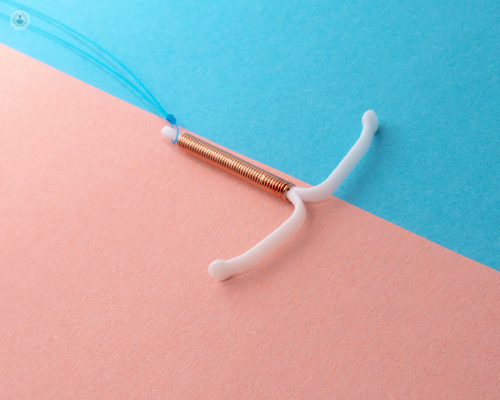T marks the spot: what is complex coil removal?
Autore:In this latest article, a consultant obstetrician and gynaecologist shares their expert insight about when removing a contraceptive coil may need a little more elbow grease than a standard removal.

What is a contraceptive coil?
A contraceptive coil (also known as an intrauterine device or IUD) is a long-term contraceptive implant shaped like a T that is placed into the uterus. They prevent pregnancy by obstructing the fertilisation of eggs. There are two types of coils:
- Copper coils, which are plastic devices that are wound with copper wire. releasing copper into the womb, which is toxic to eggs and sperm. They have a failure rate of 0.8%.
- Hormonal coils, which are also plastic devices but are equipped with a sheath of artificial progesterone that is released daily, which thins the uterine lining and an egg cannot be implanted. They have a fail rate of 0.2%.
The effects of coils can last up to ten years and are reversible as the coil can be removed by a trained nurse or doctor at any time.
How are coils removed?
At the end of the coils are a pair of plastic threads, around 2-3cm long. The threads are grasped onto with a pair of forceps and tugged to remove the whole coil (the patient may be asked to take a deep breath or cough to facilitate the process).
However, it can happen that there are complications with the threads that mean that the normal method of removal will not be feasible. They can get twisted, fold up along the device, or snap when pulled. This is when it is necessary to perform a complex coil removal.
What happens during a complex coil removal?
A complex coil removal uses an ultrasound to guide the doctor and indicate where the coil is (it is possible that the coil may have fallen out without notice!). The ultrasound may be conducted transvaginally, where a probe is inserted into the vagina, or abdominally, across the stomach. An ultrasound is effective because it provides a clear, real-time reading of the internal organs without the use of radiation.
Once the coil has been located, the doctor can begin the removal. The whole procedure will take around 30 minutes, and patients should have access to a local anaesthetic to assist with pain and discomfort, as it can be. Some patients also report feelings of nausea and dizziness during and after the procedure. This procedure is more cost-effective, time-efficient, and less invasive than surgical removal.
What happens after a complex coil removal?
Once the coil is removed, there is likely to be some cramping and sensitivity in the area for a few days. There is likely to be light blood spotting. Regardless, the patient should be able to return to their normal activities within a couple of hours after adjusting to the sensation. It is important to note that as soon as the coil is removed, the contraceptive cover is over and the fertility capabilities immediately revert to pre-coil conditions.
If you are having issues with your contraceptive, or if you would like to discuss your contraceptive options, consult with a specialist via Top Doctors.


